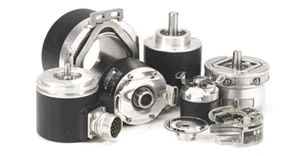
2006 CLOSED AS A RECORD-BREAKING YEAR for unit sales of HEIDENHAIN encoders. The company is now beginning the new year supported by the opening of a recently completed state-of-the-art building at its world headquarters in Traunreut, Germany. This new, approximately 135,000ft² facility is now in use for the purpose of encoder assembly and R&D.
The construction of HEIDENHAIN's new building began in July of 2004. Prior to that, many of the encoder assembly operations in Traunreut had reached the limits of their capacity. The production volumes of several product groups had doubled in the years prior, and some had even tripled. The new building, designated A30, has five floors, each is approximately 27,000ft² and currently holds about 600 employees. The basement is divided into three approximately equal areas: the assembly area for high-accuracy encoders, primarily for OEMs in the electronics industry; the long-term testing area for product qualification during the development process; and the technical facilities. The ground floor and second floor houses the assembly area for linear encoders, rotary encoders and angle encoders. Large parts of the first floor are used for air recirculation of the production level below it; the remaining spaces provide break rooms for the production employees and offices for production planning and production engineering. The third and fourth floors of the new building offer space for the offices and labs of the R&D for encoder mechanics, R&D for encoder electronics and encoder quality assurance.
The complete process of encoder assembly and packing takes place on the same floor. This makes it possible to improve both productivity and logistics, and eliminates unproductive transports and storage that require additional accounting work. In several areas the door-to-door times can be reduced. A larger column interval and large ceiling height enhances the existing areas for more flexible use, enabling engineers to react more quickly to changes in the product program and to more easily adapt their manufacturing processes.

Explore the March 2007 Issue
Check out more from this issue and find your next story to read.
Latest from Today's Medical Developments
- Arcline to sell Medical Manufacturing Technologies to Perimeter Solutions
- Decline in German machine tool orders bottoming out
- Analysis, trends, and forecasts for the future of additive manufacturing
- BlueForge Alliance Webinar Series Part III: Integrate Nationally, Catalyze Locally
- Robot orders accelerate in Q3
- Pro Shrink TubeChiller makes shrink-fit tool holding safer, easier
- Revolutionizing biocompatibility: The role of amnion in next-generation medical devices
- #56 Lunch + Learn Podcast with Techman Robot + AMET Inc.





